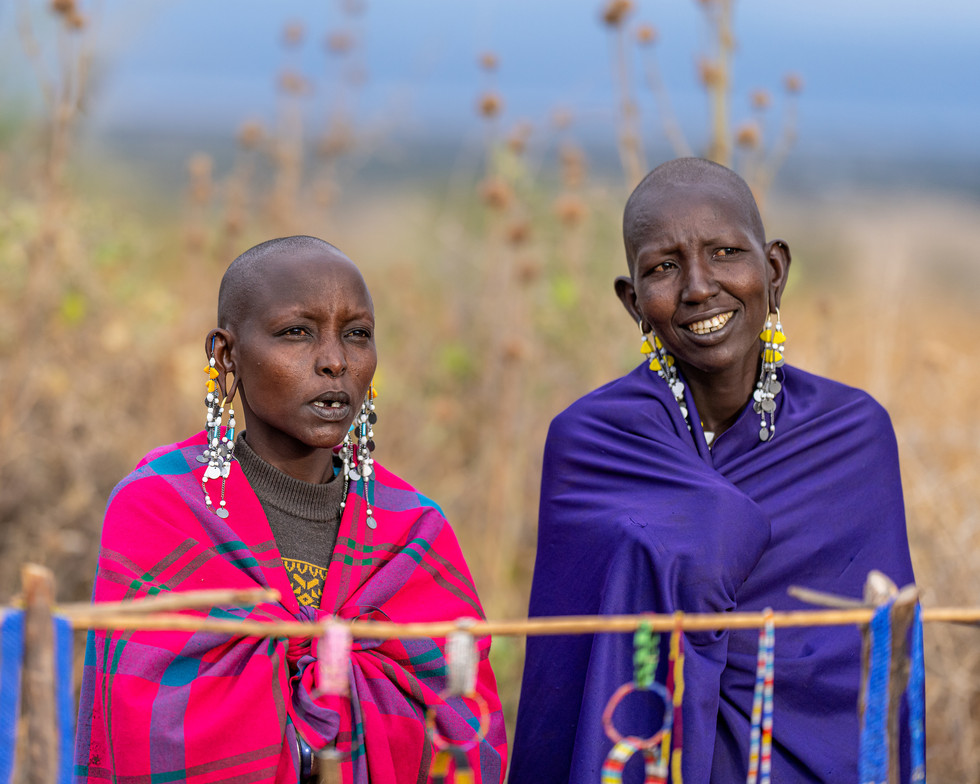Tanzania (Day 6): Isoitok Camp and the Esilalei Maasai
- That's How We Travel

- Dec 3, 2022
- 3 min read
Updated: Apr 22
Summary: On our last day in Tanzania, we spent time with the Esilalei Maasai at Isoitok Camp. This award-winning sustainable tourism lodge works alongside a local Massai village to promote responsible cultural tourism. Rustic, by City-standards, Isoitok Camp features surprisingly delicious meals and fantastic customer service. We enjoyed learning about the Maasai, including visiting the neighboring hut-village and taking a medicine walk with a Maasai warrior, "Bryan."

Maasai Village. Approximately 430,000 Maasai live in Tanzania. A large portion of the Maasai population have been displaced over the years from National Park areas as well as general City growth. We were told of rampant discrimination and efforts to assimilate the tribes into mainstream Tanzanian culture. In many places, though, the tribes continue to hold onto their heritage and live in the traditional way.
Next to Isoitok Camp a local family lives in a traditional enclave. The village consists of huts situated in a circle, surrounded by a thorny wood thicket fence. The center of the village is a courtyard of sorts where the cattle reside at night. The entire set up is designed to keep the villagers and their prized possessions (cattle and goats) safe from predators.
Each family resides together in their mud hut, which often is rebuilt after heavy rains. In the dark interior of one such hut, lived an elderly grandmother (photo below). She did not speak English but our guide translated for us as we talked about her living space.

The Women of the Maasai. The beautiful women photographed below sold us their lovely beading work. Bryan, our guide, did not sugar coat a description of their lives. In this culture, the women of the Maasai do not leave their village. Some men take up multiple wives, and most begin child bearing in their teen years. The Maasai culture is also known for other means of oppression of women and here, we learned of those too. Bryan spoke of the balance of modernizing women's rights with maintaining culture - a project some organizations like the UN are attempting to address.
Medicine Walk. Next, Bryan took us on a medicine walk where we learned about the Maasai's use of local trees for various medicinal purposes.
Baobab Tree, aka "Tree of Life" - One memorable tree we learned about was the Tree of Life. It's hard to see in the photos but this unique tree has large gourde-like fruit that is sweet and can be ground to make a sweet drink. The large trunk can store water, an essential element in this dry climate. The oldest known Baobab tree in Nambia is over 1,200 years old (!). To reach the fruit, the Maasai throw rocks at the tree to knock them down. We gave it a try and nabbed one - they're surprisingly sweet!
Cultural Experiences. As much as we love to hike and explore the outdoors, cultural experiences like this never disappoint. They add context to the places we visit and also an appreciation of the diversity of the human spirit. Whenever possible, we incorporate a day like this into our vacations. It is almost always one of the most impactful and memorable days of a trip.
About Duma Explorer Safari Company. This Tanzanian and American-owned company came recommended by a family friend. The American owners, Stacy Readal, happens to live close-by to our house so we were able to meet with her in person ahead of our trip. While convenient for us, we could have done everything by email and phone just the same. We have nothing but great things to say about this awesome company. From door-to-door, they had us covered for everything we needed on our trip. Our driver Ebinezer (after Kilimanjaro and for the rest of the week), was so talented at locating animals on our game drives, in addition to just being an over all, fun guy to be around. The lodging at each stop was perfect and each had surprisingly tasty food, along with amazing service. We highly recommend booking with Duma Explorer.
































Comments